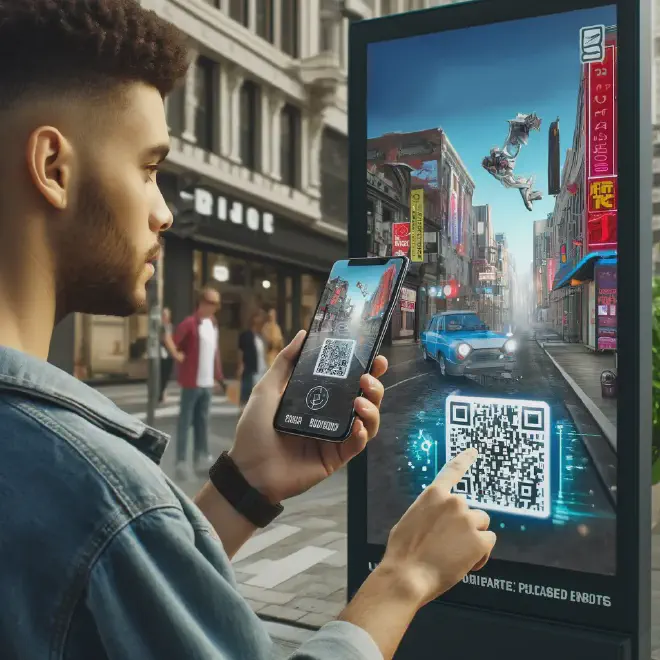Augmented Reality (AR) is transforming how brands interact with consumers by integrating digital information into the real world. This technology is not just enhancing consumer experiences, it’s fundamentally changing how marketers build connections.
Direct Interaction through Immersive Experiences #
AR enables consumers to visualize products in their own space, like seeing how furniture looks in their living room or how glasses fit on their face. This direct interaction helps reduce uncertainty in purchasing decisions and fosters brand loyalty.
Popular examples are:
IKEA Place App: This app allows users to virtually place true-to-scale models of furniture in their own space via their smartphones or tablets. It helps customers visualize how different IKEA products will fit and look in their homes before making a purchase.
Warby Parker Virtual Try-On: Warby Parker’s application uses AR to enable customers to try on different eyeglasses and sunglasses from their catalog on their own faces. This immersive experience helps consumers choose frames that they like and that fit well, enhancing their shopping experience.
Sephora Virtual Artist: Sephora’s app includes an AR feature that lets users try on different makeup products, including lipstick shades, eye shadow, and more. This tool uses facial recognition technology to apply products to the user’s live video, providing a realistic and interactive way to test products without physically applying them.
Interactive Marketing Campaigns #
Augmented Reality apps transform passive viewers into active participants by immersing them in engaging experiences. Interactive billboards or mobile-based AR experiences not only attract attention but also encourage consumers to physically interact with the content. For instance, by scanning a QR code or using a mobile app to activate AR features, consumers can unlock virtual try-ons, interactive games, or educational content, thereby increasing their time spent with the brand.
This sustained interaction helps maintain consumer interest over longer periods, fostering a deeper emotional connection with the brand. To successfully set up such a campaign, marketers need to identify the right physical locations for AR activations, ensure the AR content is seamlessly integrated with the brand’s messaging, and optimize the user experience for various devices. Additionally, tracking engagement metrics and user feedback throughout the campaign allows for iterative improvements, enhancing the overall effectiveness of the marketing effort.

Future Prospects #
The future of AR in marketing looks incredibly promising, with continuous advancements in technology, including wearable devices and more sophisticated software solutions. These innovations open up new possibilities for creating even more immersive and engaging brand experiences.
For instance, AR glasses and contact lenses could soon provide seamless and hands-free interactions, bringing digital elements into our physical world in real-time.
As AR technology evolves, marketers must stay agile and forward-thinking to leverage these cutting-edge tools effectively. This includes staying informed about the latest AR trends, investing in AR research and development, and experimenting with new AR applications to find what resonates best with their audience. By doing so, businesses can create dynamic, memorable marketing campaigns that captivate consumers and drive brand loyalty in an increasingly digital landscape.
Summary #
Augmented Reality is already vital to the marketing landscape, providing innovative ways to engage consumers. By incorporating AR, brands can meet and exceed consumer expectations with engaging and personalized experiences. Let us know if you want to bring your brand or products into social or web AR; we would love to help.